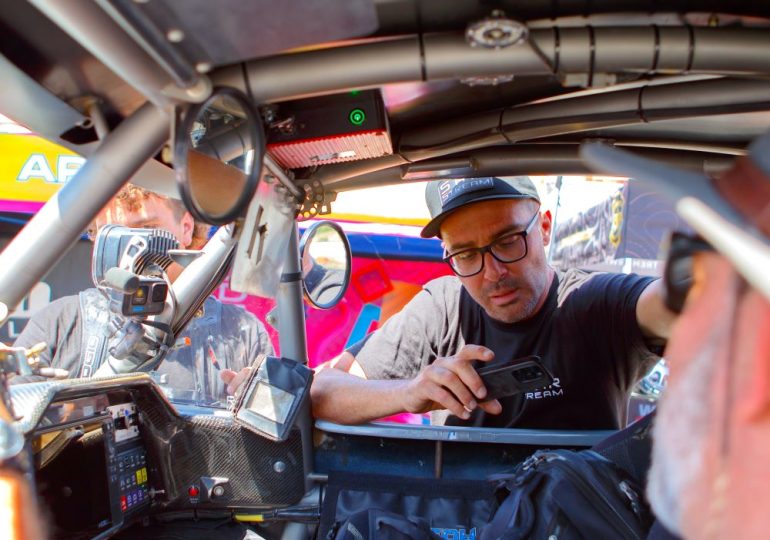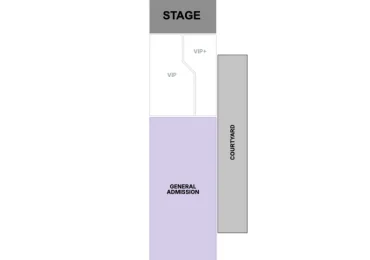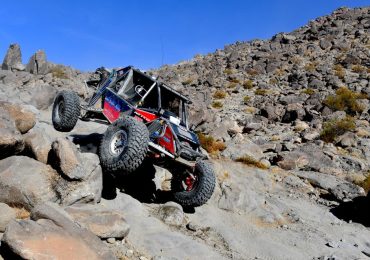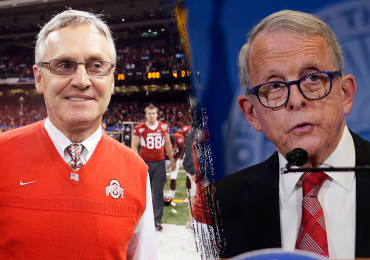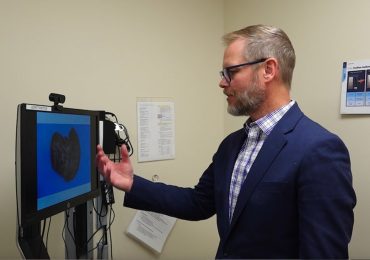If you happened to catch streaming coverage of the recently completed BFGoodrich SCORE Baja 1000, off-road racing’s newest technology was front and center for those knowing not what they were watching, but how it was possible in the first place.
For hours, SCORE’s production group provided viewers real time live in-car coverage shot in the middle of Baja’s vast wilderness, all without a cell tower or relay helicopter in sight. At one point the production cut to a live shot from inside Rob MacCachren’s chase team located on a highway directly behind the race-winning McMillin Racing Trophy-Truck. The SCORE in-studio announcing team was able to speak directly with MacCachren’s wife Amber, who was giving updates in real time from the chase truck.
In-car cameras are certainly not new, but the ability to connect cameras, voice and data from some of the world’s most remote locations is. All of it can be attributed to off-road racing’s increasing use of the Starlink satellite communications system engineered and marketed by SpaceX. First adopted by the marine and RV industries, the mobile Starlink units have seen a strong uptick in use by desert racing teams to greatly improve communications between race vehicles, chase teams and crew members. With direct internet access, all the old radio (with relays perched high on mountain tops or planes) and satellite phone technology is quickly becoming a thing of the past.
The advent of installing the Starlink units on to the race vehicles themselves is a newer trend as advancements in products specifically made for this application come to market. PCI Race Radios, for example, now sells complete installation kits for the Starlink Gen 2, Gen 3 and the recently released Starlink Mini that includes custom mounts that house the dish itself and protects it from water, dust and vibration. The units can use a magnetic mount or incorporated into solid mounts on a steel chassis or roll cage.
The key development in transforming Starlink connectivity into a live streaming service provider is the invention of the Star Stream system. Invented by California-based Star Stream company founder George Hammel, a patent-pending control unit named the StreamBox Pro takes input from two GoPro cameras and re-streams the feed to content production trucks or directly to social media platforms.
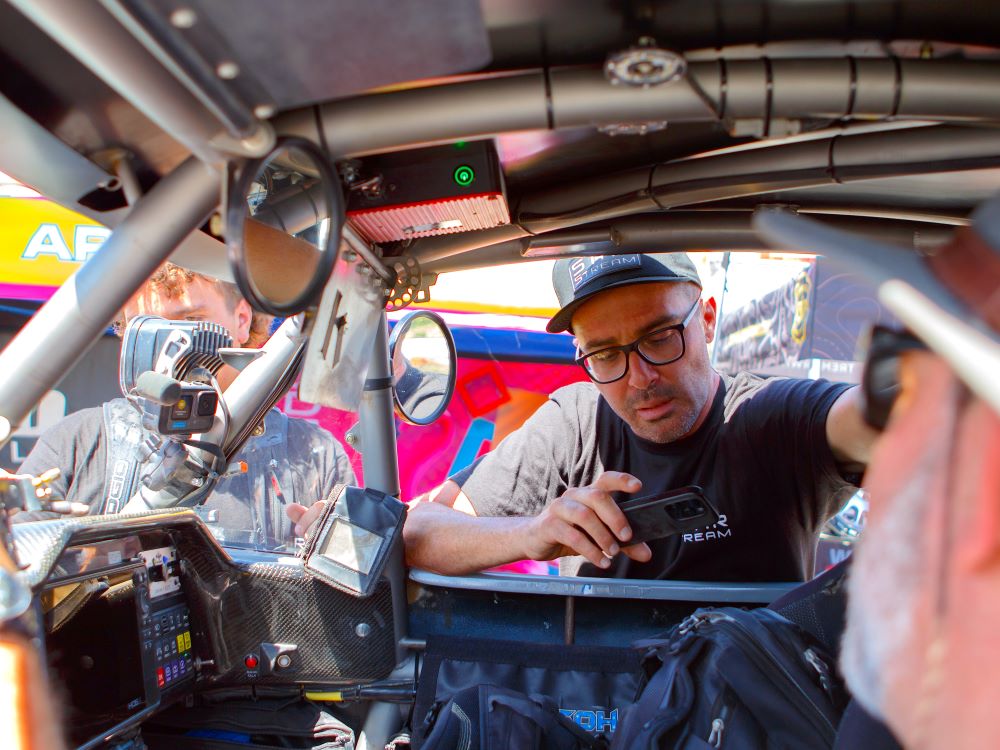 Star Stream’s George Hammel gets the StreamBox Pro ready for Baja duty.
Star Stream’s George Hammel gets the StreamBox Pro ready for Baja duty.
Racers can use the StreamBox Pro to switch camera angles, add image overlays and provide their feeds to a dedicated profile on Star Stream to send private coverage links directly to team members, sponsors, friends and family.
A primary example leading teams creating their own relevant content is 1Nine Industries, a top manufacturer of Trophy Trucks based in Fountain Valley, Calif. Formerly Herbst-Smith Fabrication, in recent years the rebranded company has expanded from a private operation for the legendary Herbst off-road family of Nevada to providing turn-key vehicles, maintenance and race support for a variety of customers.
1Nine Industries and the Herbst family is not only providing a testing platform to perfect the technology, but also important funding to create proof of concept. Together with cinematographer Bryan Moore, the team integrated the use of the Star Stream system and live helicopter coverage to provide real time coverage of 1Nine Industries’ racing desert racing efforts in Baja and the U.S. All the camera footage is streamed directly to Star Stream’s production studios and cut live with graphics for hours of streaming content.
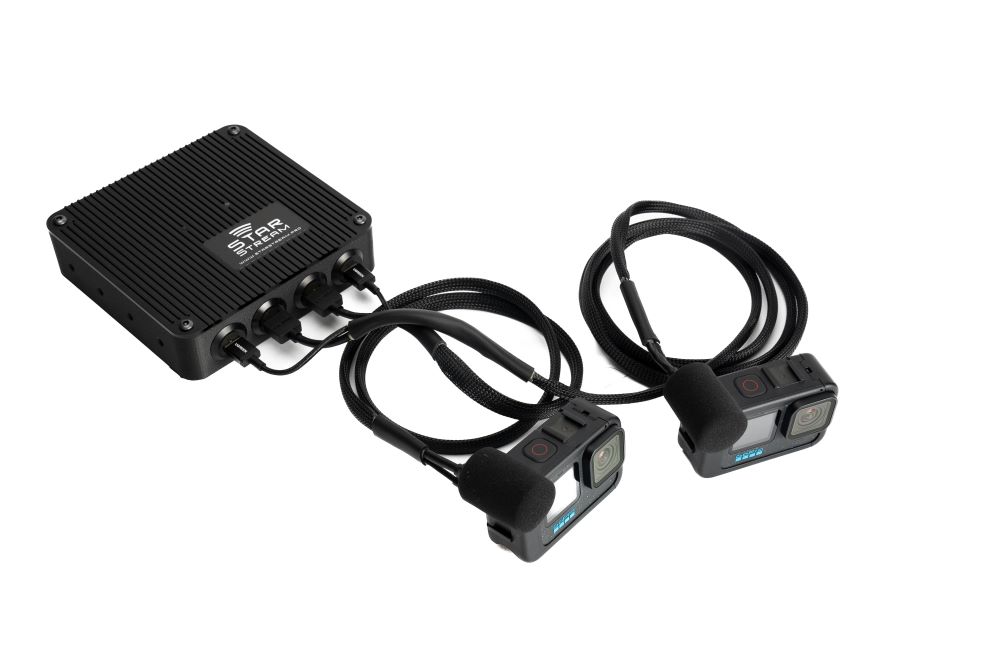 The StreamBox Pro system and cameras.
The StreamBox Pro system and cameras.
The result has been nothing short of impressive, producing 75,000,000 Terrible Herbst Motorsports social media views in 2024. As verified by sponsorship analytics company Hookit, the live Herbst Motorsports live racing experience and social media generated 63.8 million impressions on Instagram and 18.5 million on YouTube.
“That’s a big number, isn’t it?” enthused 1Nine Industries and Terrible Herbst Motorsports President Ryan Arciero. “Now everything is in real time, and we have never had access like that before. It’s changed everything for the better, and our sport’s future has blown wide open.”
As applicable as the system is to remote desert racing applications, Crandon International Raceway and its production partners at TRG Rennsport and Long Haul Productions successfully introduced Star Stream to short-course racing at the Labor Day weekend Polaris Crandon World Championships and Red Bull Crandon World Cup event. With the help of progressive race teams looking to advance the sport (and pay for their own systems) for the first time in the sport’s 56-year history viewers enjoyed real time in-car cameras as part of MAVTV network’s record-breaking 16 hours of live Crandon coverage.
Hammel and his company have now started working with the promoters of offshore boat racing, as well as producing all the streaming for the Legacy Racing Association desert series as well.
While all of this surely represents a way to greatly expand off-road racing’s footprint and audience, new technology also comes with growing pains. One issue is the interface with the race teams creating content within a sanctioned event in which the “broadcast” material is owned by the organizing body. Imagine the Ferrari F1 team producing live content from a race but having the ability to stream live footage on its own social media platforms. It would never happen.
The counter-argument to that is certainly a relevant one. The off-road audience when juxtaposed to F1 or even IMSA for that matter is growing, but smaller. In the case of the Baja 1000 or Crandon, the race teams themselves pay for all the equipment and installation costs, not the promoter or sanctioning body. The costs for a single Starlink/Star Steam package starts at around $4500 per vehicle, plus a mobile subscription from Starlink.
In the case of the Terrible Herbst Motorsports team, the agreement with SCORE International is that they have the rights to livestream on their channels only if SCORE’s production group has equal access to the same live footage. What is not allowed currently is for teams like Terrible Herbst to provide the footage to any of its sponsors for use on their social media channels unless they pay SCORE a substantial licensing fee.
The argument, of course, is that expansion of the sport is better served with additional eyeballs, something that the Terrible Herbst team could provide via primary sponsors like Monster Energy and BFGoodrich. With off-road desert racing teams competing for little to no prize or championship money while also paying for the livestream production equipment, that argument is more than relevant.
Another challenge lies in the sheer quantity of live content. At the Baja 1000, Hammel shared that Star Stream-equipped teams added 94 additional in-car cameras for coverage of the event. With that much coming in, there is no way to guarantee teams little to any coverage within the official SCORE livestream.
A final challenge is one based in technology. This type of access to internet communication can also allow live telemetry (which Star Stream is currently working on) from the race vehicle to an engineer, and vice versa — thus opening the door for in-race engine, shock and transmission tuning from anywhere in the world. The wide-open unlimited rules package in desert racing’s fastest classes allows for this, but not in the much more controlled environment of short-course racing, for instance.
No matter the outcome, thanks to SpaceX, Starlink and innovators like Hammel, the power of real time, in-car content and unlimited internet access has arrived to greatly impact off-road racing’s future. Given the environment, it changes this form of motorsports far more than almost any other on earth.

